Last Updated on October 12, 2021
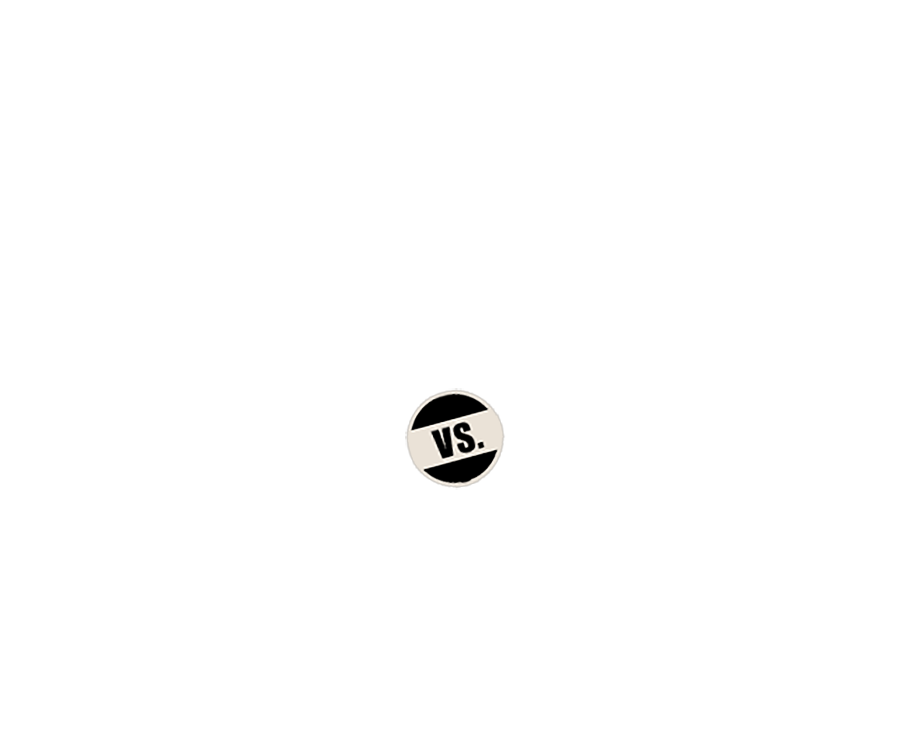

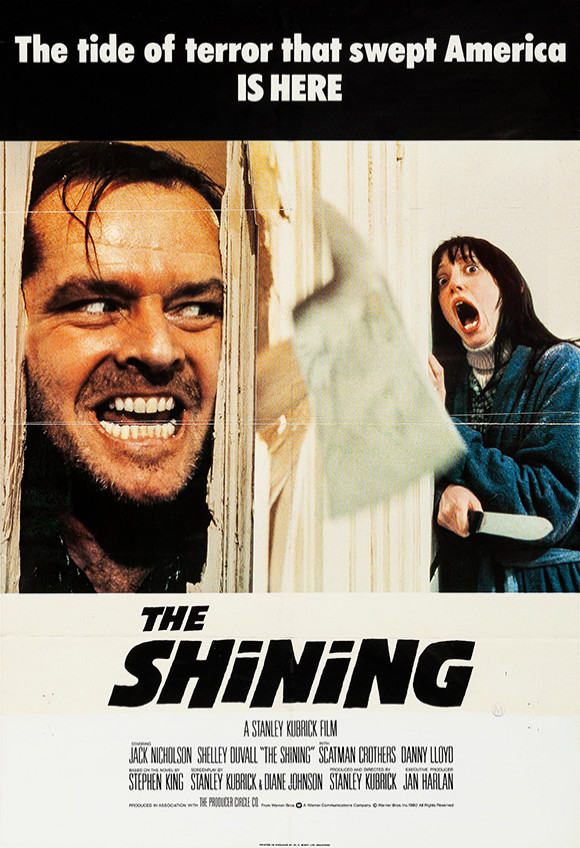
Nice to see you again, fans of the cinema! This is the Face-Off, where two movies enter and both movies leave, but one leaves in a slightly better light. Yes, here we take two competitors and compare their key elements and see who comes out the champion. It's a fierce competition that results in blood, tears, and online arguments, but the more brutal the battle, the sweeter the victory.
Spooky season has come and gone, but that doesn't mean we can't get into a few more scares before we're fully consumed by plump men in red coats and music that makes you want to bang your head for a totally different reason. With that in mind, this Face-Off comes perfectly sandwiched between both Halloween and the release of the latest Stephen King adaptation, DOCTOR SLEEP, the follow-up to the classic King tale and Stanley Kubrick film, THE SHINING. It's for that reason we will be going back to the Overlook Hotel with this edition, and with it, we're bringing the demonic movie to end all demonic movies, and a title oft-cited alongside THE SHINING itself as one of the greatest horror movies of all time — THE EXORCIST.
Both movies are iconic entires in the field of horror – and to some, they are two of the very best. In this long bout, I will be taking a look back at both movies and examining their key elements to determine which bone-chilling flick is the last word on horror. Grab your axes and your crucifixes, because we're about to dive into the bowels of Hell itself!
Ellen Burstyn as Chris MacNeil
Linda Bliar as Regan MacNeil
Jason Miller as Father Damien Karras
Max Von Sydow as Father Lankester Merrin
Lee J. Cobb as Lt. William F. Kinderman
Jack MacGowran as Burke Dennings
William O'Malley as Father Joseph Dyer
with Mercedes McCambridge as the voice of Pazuzu
and Eileen Dietz as the face of Pazuzu
Jack Nicholson as Jack Torrance
Shelley Duvall as Wendy Torrance
Danny Lloyd as Danny Torrance
Scatman Crothers as Dick Hallorann
Barry Nelson as Stuart Ullman
Phillip Stone as Grady
Joe Turkel as Lloyd
Anne Jackson as Doctor
Tony Burton as Larry Durkin
Lisa and Louise Burns as The Twins
Lia Beldam as Young Bath Woman
Billie Gibson as Old Bath Woman
To put it so bluntly, director William Friedkin was not f—king around when he went about making his movie about a demon possessing a young girl. Not settling for simply a chilling horror movie that could make use of some clever visuals and makeup, Friedkin pushed every element to their absolute extremity to craft something that feels truly, hellishly evil. But as supremely unnerving and vicious Friedkin’s ultimate vision may have been on a horror level, what makes it a masterclass in filmmaking is how well he balances nightmarish visuals with genuine pathos and character development. A gradual build-up to the unforgettable finale, Friedkin worked with editors Evan Lottman and Norman Gay to ensure the story evenly bounced between the MacNeil family’s growing infiltration by a demon and Father Karris’ struggle of faith in a way that gave the audience a reason to care about where they would end up come the end. In doing so, Friedkin proves himself a master of blending the grounded, relatable character struggles with the heavy, dread-filled tone, with the anxieties of Chris and Karris deepening as the possession of Regan worsens. As for that latter element, Friedkin pushed every boundary and taboo out there to give proper life to William Peter Blatty’s story, not shirking on the violence or still-disconcerting visuals. In order to give true menace to the things Demon Regan was doing Friedkin certainly put his actors through hell, tossing around Ellen Burstyn (injuring her back in the process), making Regan’s room the temperature of an ice freezer, and even spitting up pea soup in Jason Miller’s face when he thought it would go on his chest. The old-school style of filmmaking may not fly today, but the result is undeniable. The genuine shock and terror that comes from the cast is felt in the finished product, and toss in how his eye for arresting visuals keeps alive a special brand of haunting movie magic that doesn’t exist on that same level in modern horror, and there is more than enough evidence of Friedkin’s genius on display.
All that about Friedkin said, if we’re talking genius, few filmmakers wear the label as well as Stanley Kubrick. Tackling a commercial horror flick after the bore that was BARRY LYNDON, Kubrick proved there was no genre he couldn’t make his own and infuse with his artistic brilliance. Scary? Yes. Competently made? Damn right. A bit darkly comic? For sure. THE SHINING is all that, on top of being deeply, deeply complex in ways only Kubrick could bring to life. Mountains of research and college thesis have been dedicated to picking apart the secrets, coincidences and general madness of Kubrick’s work, and indeed, the more fascinating details begin to enrich the experience beyond it’s more straightforward elements. This is a large part thanks to Kubrick’s unbelievable eye, precision to detail and depth of his approach, which is also perhaps what made SHINING such a disaster to people who wanted, and were expecting, something as terrifying as, say, THE EXORCIST. But it’s when you start peeling back the layers and dig into the roots of his Overlook Hotel you understand it's that precise attention to detail and craftsmanship behind every frame that makes it such a masterpiece. The hotel itself is a textbook example of “mise en scene”, with the claustrophobic, mysterious, purposefully non-sensical layout of the building being the physical embodiment of madness. By crafting such a space and pacing out the tension so slowly and carefully, Kubrick crafts terror in a way that worms its way into your mind and f—ks with it to no end, plunging you deeper and deeper into the abyss. As per an earlier work, 2001: A SPACE ODYSSEY, Kubrick makes every frame and every detail have a place and meaning, and digging into what his intentions behind all of them mean and can be interpreted as is what has made the movie such an endearing horror classic worthy of endless study, and it's a testament to the mind of the man behind the camera.
William Peter Blatty had plenty of experience in the screenwriting trade before sitting down to write the book that would become “The Exorcist”, so it was only befitting that he adapted his work for the screen. As mentioned above, what makes the movie version such a triumph – outside of the terrifying bits – is how the characters, their personalities and their fears feel fully fleshed out. Karras, a man whose faith and hope in things is being tested after losing his mother, finds his more pragmatic reasoning challenged when he meets a possessed Regan – all of which makes for the perfect material for the quietly intense Miller. Burstyn’s Chris MacNeil has an even more compelling role as the mother who knows there’s something wrong with her daughter beyond what anyone else is seeing or telling her, with Burstyn passionately bringing to life a mother at the end of her wits, but unflinching in seeking help for her daughter. Blatty – no doubt whittling things down from the book – keeps these character dynamics front and center against the backdrop of an eternal conflict, that being good vs. evil, hope vs. darkness, or any other way you can spin it. Just as Friedkin expertly builds from chilling vibes to the pure evil in the final moments of full possession, so does Blatty’s script balance the character drama with taut suspense that builds and builds to something that will cause permanent nightmares. Blatty’s work is the best of what a self-adaptation should be, one which acknowledges what should be cut, what should be emphasized, and what will make for the strongest version to be displayed on any screen.
As much of a horror masterpiece as it is, THE SHINING is far better on execution and a visual front than it is on storytelling and character one. Regardless of the many changes writers Kubrick and Diane Johnson made from Stephen King’s book (less focus on the supernatural and ghostly presences), their approach meant to dig into the psyche and behavior of Jack Torrance, who is being affected by the mysterious, dark nature of the hotel. As far as characters go, the movie hinges on the Torrance’s, and mostly Jack, with Danny’s abilities sparking visions and activities that worsen as Jack’s mind starts to go. While the script gives Danny plenty of clever moments that are iconically realized by Kubrick, Jack gets the meat of the story, the script tackling his rage, alcoholism, and ego, with Nicholson getting more than enough clever dialogue to chew on and forever cement in pop culture history. But I don’t think all the characters get proper treatment, with Duvall’s endlessly positive and somewhat dopey Wendy being more of fodder for Jack to belittle and be an eventual foil for, with her not doing much except helplessly run and scream from her madman husband. Dick Halloran also has little to do, other than explain what is happening to Danny and act as a mentor for the little guy – his death no doubt being a shocker to fans of the book. These characters are certainly not useless, but alongside some of the more magnanimous qualities of it feel weaker. Again, the movie works best and most memorably when looking at is a masterclass from Kubrick as a director and as an examination as Jack by himself, but there’s a lot else in the bones of the script that don’t work quite as well, from some character work and story progression that has power moreso thanks to Kubrick’s eye and a fantastic soundtrack.
Bits:
Statue in the Desert
Walking Home (music cue)
Ouija Board
Piss
Bed Shaking
Giving Regan Her Medicine
Regan Gets Violent
Hypnosis Session
The Crucifix
Father Karras and the Devil
Pea Soup
Father Karras and the Devil 2
Father Merrin Arrives
The Exocism
Head Spin
The Float
Father Karras Falls
**Spider-Walk (Version You've Never Seen)**
Lines:
Karras/Merrin: “The Power of Christ compels you!”
—–
Pazuzu: “What an excellent day for an exorcism.”
Karras: “You would like that?”
Pazuzu: “Intensely.”
—–
Karras: “Well, then let's introduce ourselves. I'm Damien Karras.”
Pazuzu: “And I'm the Devil. Now kindly undo these straps!”
—–
Pazuzu: “Your mother sucks cocks in Hell, Karras, you faithless slime!”
—–
Pazuzu: “Your mother's in here, Karras. Would you like to leave a message? I'll see that she gets it.”
—–
Pazuzu: “Lick me, lick me!”
—–
Merrin: “Especially important is the warning to avoid conversations with the Pazuzu. We may ask what is relevant but anything beyond that is dangerous. He is a liar. The Pazuzu is a liar. He will lie to confuse us. But he will also mix lies with the truth to attack us. The attack is psychological, Damien, and powerful. So don't listen to him. Remember that – do not listen.”
—–
Merrin: “In the Name of our Lord Jesus Christ! It is he who commands you! It is he who flung you from the gates of Heaven to the depths of Hell!”
Pazuzu: “Fuck him!”
Merrin: “Be gone…”
Pazuzu: “Fuck him, Karras! Fuck him!”
—–
Karras: Take me! Come into me! God damn you! Take me! Take me!
—–
Karras: You speak Latin?
Pazuzu: Ego te absolvo.
Karras: Quod nomen mihi est?
Pazuzu: Bon Jour.
—–
Pazuzu: “Let Jesus fuck you, let Jesus fuck you. Let him fuck you.”
—–
Karras: “Look, your daughter doesn't say she's a Pazuzu. She says she's the devil himself. And if you've seen as many psychotics as I have, you'd know it's like saying you're Napoleon Bonaparte.”
Bits:
Soaring Over the Lake
Meet Tony
Tour of the Overlook
Dick Knows
Bike Ride 1
The Maze
Interruptions
The Twins
Father and Son Chat
Room 237
Having a Drink
The Lady in the Tub
Roaring 20s
All Work and No Play
Jack Attacks
Here's Johnny!
Down Goes Dick
Dead in the Maze
Lines:
Jack: “Here's Johnny!”
—–
Twins: “Hello, Danny. Come and play with us. Come and play with us, Danny. Forever… and ever… and ever.”
—–
Jack (Typed Out): “All work and no play makes Jack a dull boy.”
—–
Danny: “Redrum. Redrum. REDRUM!”
—–
Lloyd: “Women: can't live with them, can't live without them.”
Jack: “Words of wisdom, Lloyd my man. Words of wisdom.”
—–
Jack: “Danny, I'm coming!”
—–
Jack: “Wendy, I'm home.”
—–
Jack: “I'm not gonna hurt you.”
Wendy: “Stay away from me!”
Jack: “Wendy? Darling? Light, of my life. I'm not gonna hurt ya. You didn't let me finish my sentence. I said, I'm not gonna hurt ya. I'm just going to bash your brains in! Gonna bash 'em right the fuck in!”
—–
Jack: “Little pigs, little pigs, let me come in. Not by the hair of your chiny-chin-chin? Well then I'll huff and I'll puff, and I'll blow your house in!”
—–
Jack: “Now, we're going to make a new rule. When you come in here and you hear me typing or whether you don't hear me typing, or whatever the fuck you hear me doing; when I'm in here, it means that I am working, that means don't come in. Now, do you think you can handle that?”
Wendy: “Yeah.”
Jack: “Good. Now why don't you start right now and get the fuck out of here.”
—–
Jack: “Mr. Grady, you were the caretaker here.”
Grady: “I'm sorry to differ with you sir, but you are the caretaker. You've always been the caretaker. I should know sir. I've always been here.”
—–
Dick: “Some places are like people: some shine and some don't.”
—–
Danny: Don't worry, Mom. I know all about cannibalism. I saw it on TV.
Jack: See, it's okay. He saw it on the television.
—–
Jack: “Wendy?”
Wendy: “Yes?”
Jack: “You got a big surprise coming to you. You're not going anywhere! Go check out the Snow Cat and the radio and you'll see what I mean. Go check it out. *Go!* Go check it out! Go check it out!”
—–
Jack: “Wendy, listen. Let me out of here and I'll forget the whole damn thing! It'll be just like nothing ever happened. Wendy, baby, I think you hurt my head real bad. I'm dizzy, I need a doctor. Honey, don't leave me here.”
—–
Forgoing a traditional score composed by a single composer, Friedkin opted for a soundtrack featuring classical compositions from musicians like Krzysztof Penderecki, alongside a few original pieces by Jack Nietzsche, in the original release of the movie. The classic piano theme that has long been associated in the movie and used briefly in it, “Tubular Bells” by Mike Oldfield, is a perfect accent melody to go along with the movie. Otherwise, music is used sparingly, primarily in transitional scenes with Friedkin not using any music at all during the horror scenes of moments of dialogue. There’s a stillness and maliciousness in the air that Friedkin clearly wanted people to settle into, and indeed, the scarier bits work well enough on their own without the accompaniment of music.
As he did with 2001: A SPACE ODYSSEY, Kubrick didn’t go for a primary composer for an original score, and like Friedkin, opted for mostly classical compositions, funny enough, also using pieces from Krzysztof Penderecki (the piece “Polymorphia” is used in both movies). Musicians Wendy Carlos and Richard Elkind did come in to compose music for the movie, creating the heavy intro theme we hear at the beginning which, like “Bells” for EXORCIST, make for an iconic theme. But whether it’s work from Carlos/Elkind, Penderecki, Al Bowlly (“It’s All Forgotten Now”) or the old-timey tunes of Henry Hall, the music assembled by music editor Gordon Stainforth has a surreal, mystical, piercing effect that can shake the senses and make the hotel feel otherworldly. Music is used to the opposite effect in THE SHINING as it is THE EXORCIST, with Kubrick using music to heighten the dread and paranoia while Friedkin used a lack of it to emphasize the heavier sense of reality. Music certainly has a larger role to play in this movie than THE EXORCIST, and SHINING is all the more memorable and haunting for it.
As I’ve said before, THE EXORCIST is an evil f—king movie. From some of its earliest moments in the heat of Iraq there is something incredibly unsettling and malicious about THE EXORCIST, with such a strong focus on the darker elements of religious iconography. With Father Merrin standing atop that rock, staring at that nasty-looking statue, dogs fighting off to the side, a very evil feeling washes over the movie and never lets go. By the time we get to the MacNeil home, with scratch sounds going down the walls in the night, it’s easy to be ensnared for whatever terror the movie has in store. There are no shameless jump scares that pepper random scenes until shit gets cranked to 11, but rather Friedkin confronts audiences with a heavy sense of dread that permeates every scene – all before driving it home with jarring shock value that burns itself onto the brain. No matter how many times I’ve seen this movie it always manages to leave an impression and make my skin crawl and make me fear things I don't believe in, and that’s in part to how well Friedkin executes the scares, and just as well to the cinematography from Owen Roizman, the makeup, the visual effects and the dedicated physical performance from Blair and McCambridge’s iconic voice work. All of it comes together to make the perfect concoction of terror that has the force of nature to both enrapture and scar.
As mentioned above, the music arrangement goes a tremendous way in making THE SHINING’s tension and scares become vastly more unsettling and scarier. That being the case, THE SHINING is, and I may be in the minority here, not all that scary. Unnerving? Freaky as hell? Sometimes shocking? Yes to all of the above. Stanley Kubrick did just as well of a job making a horror movie as he did a space odyssey, that is for sure. But, compared to THE EXORCIST, it’s simply not as terrifying in the ways that matter in comparisons like this. Much of the props go to Kubrick’s crafting of a twisted atmosphere, lacing in some spine-tingling elements, like rivers of blood and iconically creepy twins. These moments can stamp themselves on the brain, and when matched with the right music can stay there even longer. But I like to consider THE SHINING more fascinatingly eerie than scary, in that everything is so maddening and off-putting I find it more gripping thematically. THE SHINING is freaky, and compellingly so, but it doesn’t have the sheer force of terror that EXORCIST has to make me shudder at the thought of it alone.
Audiences lined up around the block amid freezing temperatures to see THE EXORCIST when it hit theaters, some crowds even fighting their way into the theater just to see how Blatty’s work had been brought to the screen. The movie was an instant cultural phenomenon, making $193 million when it was first released, which when adjusted for inflation, puts it at about the $1 billion mark domestically, making it one of the top 10 movies of all time at the box office. The movie broke boundaries, earning Golden Globe nominations (winning for Best Picture, Best Director and more) and 10 Oscar nominations (winning two for Screenplay and Sound Mixing), becoming the first horror movie to be nominated for Best Picture. The movie changed the way horror films were made going into the future, not only by kicking off a religious-horror craze but also in how big studios approached making them and tried to mimic the style of the movie. Phrases like “Scarier than THE EXORCIST” would be marketed to prove just how scary [insert horror title here] was. While you don’t need to wait in sludge and rain to get tickets anymore, the love for the movie has hardly waned in the 46 years since it was released. Countless polls, and even directors like Martin Scorsese, continue to rank it as one of the scariest movies ever – and for great reason. The movie has lost almost none of its power over the years, even as the boundaries of horror continue to be pushed in new ways and across new subgenres. Some horror movies lose their mysticism and ability to frighten over times as sensibilities and tolerances change – but not THE EXORCIST. Still quoted, referenced, inspired by and still scary as all hell, the movie has earned its place as not only a landmark horror movie but a legitimate global phenomenon.
Anyone who is even slightly familiar with the history of THE SHINING knows it was, to put it nicely, not well-received when it came out. Critics may have lauded certain aspects, but for the most part, it was labeled a chill-less, thrill-less bore that hinted Kubrick may have been losing his touch. Even King himself famously disliked the movie, going as far as to oversee a miniseries based on the book, and one he considers more faithful to the material than the movie. The movie – perhaps in large part thanks to fans of the book – did eventually make a profit at the box office in 1980 ($45 million globally off a $19 million budget), but in the end, the movie was disregarded and was nominated for two Razzie awards – making it one of the few Kubrick movies to not find a spot at the Oscars. It took a few years for everyone to realize how wrong they were. Now a classic example of a movie torn apart upon release but prized years later, by the end of the decade, the movie was being re-evaluated and seen as yet another Kubrick masterpiece, and one with more layers that a single view could offer, and more terror than was on the surface. Now as we near the movie’s 40th anniversary next year and the impending release of a sequel (based on King’s sequel novel) this week, there is no doubt THE SHINING is one of the great horror classics, placed on just as many lists of the best in the genre alongside THE EXORCIST, with just as many iconic scenes and lines that have secured a firm place in pop culture. One could even say the line “Here’s Johnny!” is more recognized from Nicholson’s improvised inclusion than the Johnny Carson intro he took it from. Now that, my friends, is a legacy.
There’s a powerful sense of uneasiness that comes from the early Iraq scenes in THE EXORCIST, what with the ancient ruins and freaky statues. That transfers well to the historic Georgetown, and while lacking sand has its ghostly vibe, as the wind blows autumn leaves around and chills the air. Most of the action is set in the MacNeil home, a big but still ordinary home we don’t get to see all that much of other than the upstairs rooms. Simplicity is the name of the game here, with production designer Bill Malley emphasizing nondescript white walls and basic bedroom layouts to project immense terror across. Come the finale all there is a blank wall, minimal lighting, a bed with a demon strapped to it and all the Power of Christ two can muster. Simple, effective and terrifying, and for this movie there was no better canvas to make the family seem more relatable and the terror to have such a large presence. But, come on, look at its competition.
The winding halls. The large, ominous ballrooms. The orange, hexagonal floor pattern that proves that in a movie as methodical as THE SHINING even the carpeting has a mythos to it. The Overlook Hotel is one of the most iconic movie locations for a litany of reasons, and production designer Roy Walker and art director Leslie Tomkins deserve immense credit alongside Kubrick for making the grand hotel with enormous ballrooms and suites feel claustrophobic and haunted. It’s arguably the main character in the movie, the one who runs the show and has a malicious intent to twist Jack into an ax-wielding, quippy lunatic. More a labyrinth from Hell than a hotel, there’s terror around every corner, and the design, absurd layout, and the filming of it all through such a precise lens, make it such a thrilling location to revisit. And I didn’t even get to the hedge maze! How does anyone go to a hedge maze anymore and not picture Jack Nicholson chasing them around?
As far as haunting visual effects and makeup go, THE EXORCIST is without equal. The final possessed form of Regan is as horrifying today as it surely was to audiences back in 1973, with deep yellow eyes, cold skin, and numerous cuts– all brought to life through Blair’s physical performance and McCambridge’s vocal work – making her presence the stuff of nightmares. If the makeup wasn’t enough to bring the demon to life, incorporated are some eye-popping visual effects, from casual, head-spinning puppetry to the bed float to end all bed floats. The image of demon Regan grinning and starring daggers will never not be spine-shivering, and fears of bed shaking have increased exponentially since 1973 (as have fears in anything remotely demonic) and that is all thanks to the long-lasting impact the work from the visual effects, stunt and makeup departments has had on audiences for decades.
THE SHINING has it’s fair share of freaky visual effects and makeup work: You got creepy twins standing in the hall, a pretty lady getting out of the tub and becoming a very not pretty lady, and a river of blood coming out of the elevator doors – all of which are moments that have cemented themselves in pop culture. But overall, Kubrick is more interested in the human nature side of the terror – with visual effects and makeup not having a large presence. That approach is more than effective, even if some of the book supporters wanted more of the supernatural stuff. And yet, when there are inspired moments that use visual effects and piles of fake blood and rotting skin, it’s incredibly effective and eerie, and do the job of giving the Overlook and even more nightmarish atmosphere.
There is no denying the power and legacy of Kubrick's THE SHINING. A true horror masterpiece with as much brainpower as it does chill power. So many classic moments and even more to dissect, this movie has earned its place as one of the best in the field. Anyone who thinks this outcome is wrong has ample reason to think why. And yet, in my very humble opinion, believe THE EXORCIST is a better movie. Is it better on every front? No, certainly not. But on top of also being masterfully crafted from script to screen, the movie is far scarier, boasts stronger visuals, and leaves a mark that's impossible to shake and will cause restless sleep for nights on end. There's a power to THE EXORCIST that no horror movie has been able to replicate, hard as they try, with it being a masterclass of writing, directing, visual effects and acting. To bring this bout to a close, THE EXORCIST is horror filmmaking at its most perfect.






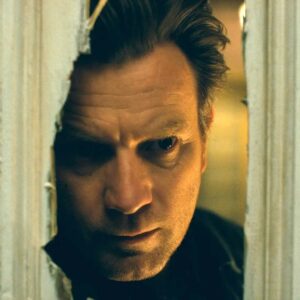
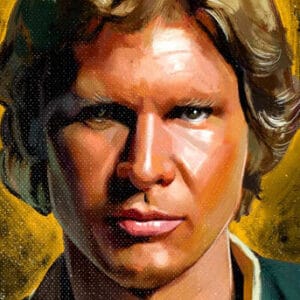
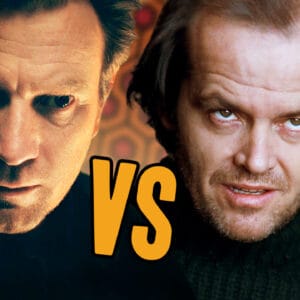
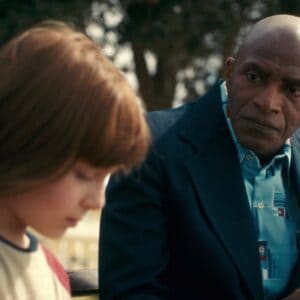


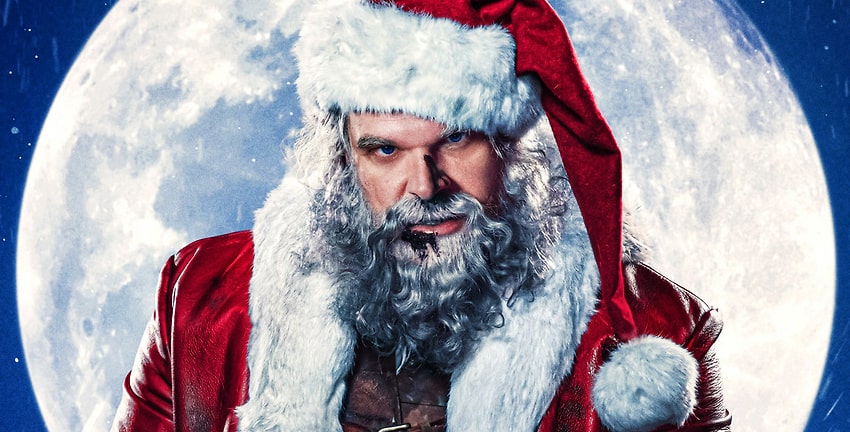

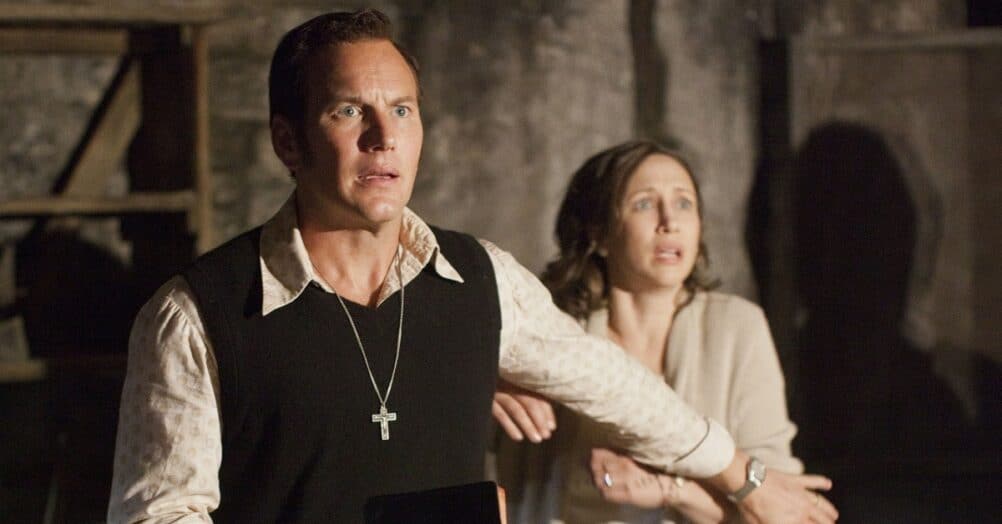





Follow the JOBLO MOVIE NETWORK
Follow us on YOUTUBE
Follow ARROW IN THE HEAD
Follow AITH on YOUTUBE